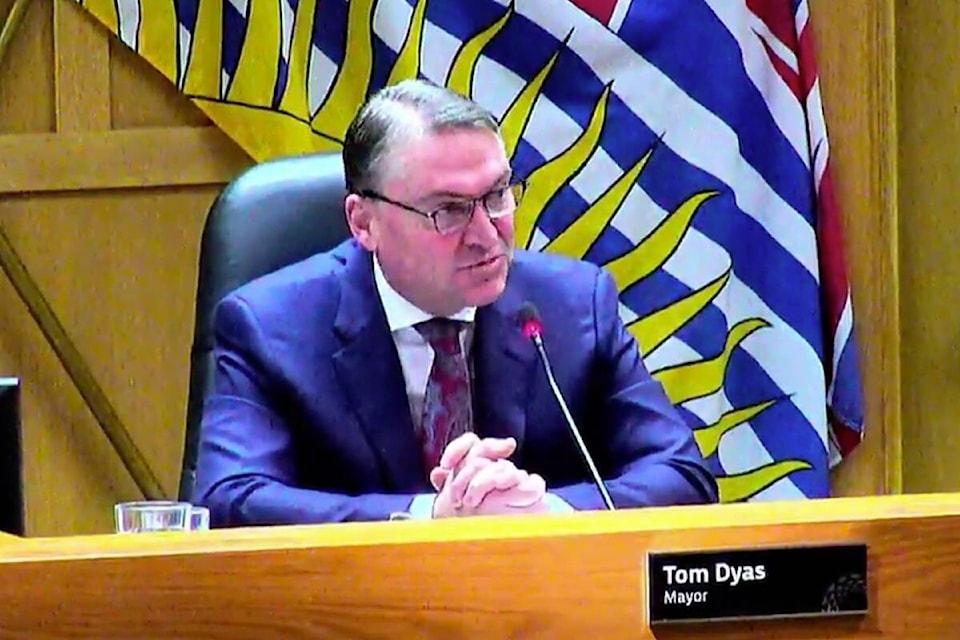As we enter the spring season, many of us are looking forward to warmer weather, blooming flowers and outdoor activities.
However, it is also a time when we start thinking about our snowpack, lake levels and the annual freshet season which typically occurs from April to July.
With severe drought in the valley last year, followed by a relatively dry winter, as of Feb. 1, 2024, snowpack in the Okanagan Snow Basin was 86 per cent of normal.
We have experienced similar snowpack levels in the valley in recent years including 2017 and 2021 and continually monitor the impact on our lake levels and water supply.
While it is true that snowpack plays a significant role, the amount of precipitation during the months of March and April can also be a major factor.
But whether spring roars in like a lion, or more gently like a lamb, we have made big advancements in hydrological modelling, real-time weather data, and remote sensing technologies to better predict, monitor and, together, take the necessary steps to mitigate any potential impacts of both floods and droughts in the Okanagan Valley.
Many of the valley’s municipalities, including City of Kelowna, source their drinking water supply from Okanagan Lake.
Lake levels are managed by the Province of British Columbia by controlling releases from Okanagan Lake Dam in Penticton, which is part of the Okanagan Lake Regulation System.
The province has reduced lake outflows to keep lake levels close to normal at 341.60 metres as of the end of February.
In managing the lake levels, the province’s considerations include flood control, water supply, fisheries, aquatic, riparian and environmental values, recreation and tourism.
Doing its part, the city is responsible for managing any consequences of reduced lake levels and drought through water conservation measures, as well as effective management of McCulloch Lake, the one lake that we have some control over.
Lake levels can vary seasonally by about 1.2 metres. The city water utility’s two largest drinking water sources, located near Poplar Point and Cedar Creek Park, each have very deep intakes and pumping systems that are not operationally impacted by these seasonal fluctuations.
During a major drought, however, other factors can play a role in how much water the province allows us to use.
On the non-potable water front, as of Feb. 27, the McCulloch Lake reservoir system that supplies our irrigation and agriculture system is at half capacity.
As mentioned, spring precipitation typically contributes significantly to water levels.
We remain hopeful that the reservoir will reach full pool, with enough water to supply normal agricultural and environmental needs for this year.
However, regardless, we are used to an arid environment and need to be ready to manage all levels of drought conditions accordingly.
While it is too early to tell what spring runoff and precipitation will bring, and whether there will be a need to introduce any measures beyond our normal summer watering restrictions, it is always a good time to be thinking about water conservation.
Water is a precious and finite resource that we all depend on. If we use more than nature can replenish through rain and snow, we will run a deficit.
The Okanagan continues to have one of the highest rates of water use per person in Canada, and landscape irrigation accounts for 55 per cent of this.
This means that, during the summer, we’re using around 72 million litres of water on average just for our lawns and gardens.
One of the biggest ways we can protect our water supply is by making positive water choices in both indoor and outdoor settings.
You can make a difference by:
• Checking your faucets, pipes and toilets for leaks and fixing them as soon as possible.
• Installing low-flow showerheads, faucets and toilets, or use aerators and displacement devices.
• Taking shorter showers and turn off the faucet when brushing your teeth or shaving.
• Washing only full loads of dishes and laundry and use the shortest cycle possible.
• Adjusting your automated sprinkler controller when necessary.
• Following the year-round assigned day watering, watering your lawn and garden only when needed, and avoiding watering during the heat of the day or when it is windy.
• Chose climate appropriate plant material and consider xeriscape landscaping.
• Using a rain barrel to collect rainwater for watering your plants.
• Using a broom instead of a hose to clean your driveway, sidewalk or patio.
By working together, we can respond to drought conditions that are stubbornly continuing into 2024 and ensure that we have enough water for our current and future needs, while also preserving the natural beauty and ecological diversity of our region.
For more WaterSmart tips, kelowna.ca/watersmart.
Tom Dyas is the mayor of Kelowna.
